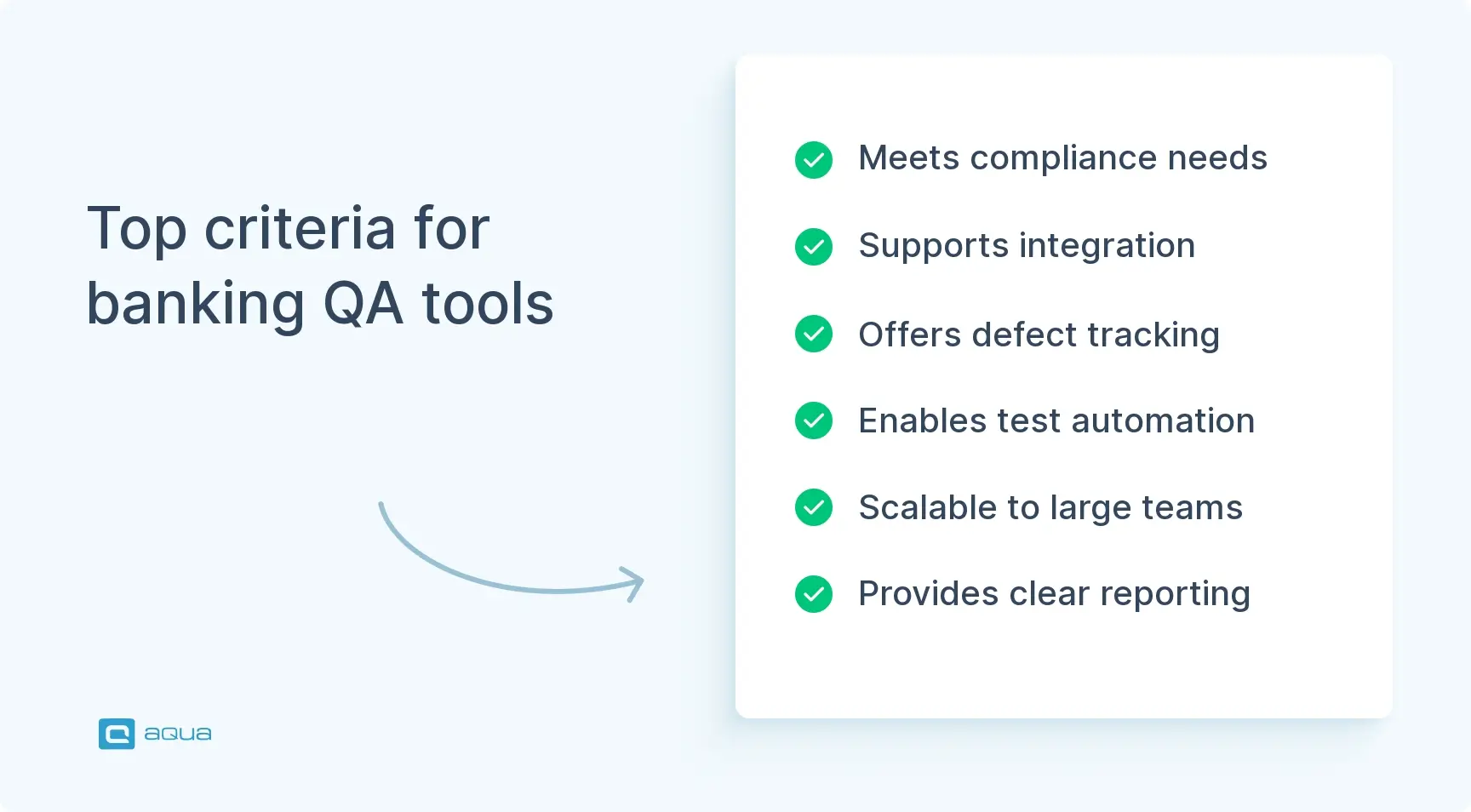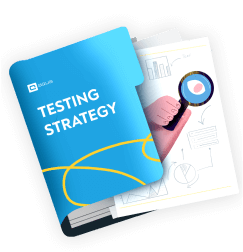QA testing ensures the outstanding quality of banking applications before releasing them to the customers. Testing ensures that the product is defect-free, enables seamless transactions, and delivers a great customer experience.
Hence, banking systems need to leverage QA testing to get high-quality and flawless banking applications. You’re dealing with a compliance maze that’s constantly shifting – SOX, GDPR, PCI DSS, AML requirements don’t wait for your testing cycles to catch up. Your ALM platform needs to create an unbroken thread from regulatory requirements straight through to test execution and results.
Start here: Set up automated traceability mapping in your ALM tool that links each compliance requirement to specific test cases. When auditors show up (and they will), you’ll have that audit trail ready in minutes, not days.
The banks getting this right have seen compliance preparation time drop by nearly half. Your QA isn’t just finding bugs anymore; it’s your compliance insurance policy.
What steps does a QA team take to succeed in the audit?
Advanced technologies such as AI, cloud services, machine learning, and blockchain are rising with more digitization in banking systems. However, customer experience (CX) and customer data security remain the primary focus for the financial sector. As a result, banking systems are looking to improve their applications, simplify customer journeys, and provide a seamless omnichannel experience. This goal involves a good QA process with expert QA professionals specialized in various testing types. Your QA approach needs to go way beyond checking if buttons work. You’ll want to weave security testing directly into your daily workflow: think penetration testing every sprint, not just annually.
You need to start with automated infrastructure resilience tests that simulate real outages. Most teams skip this and get burned when their cloud setup crumbles under pressure. Pick one critical user flow and stress-test both its functionality and security simultaneously this week. Track your mean time to detect issues as your success metric.
Some necessary testing’s which are mandatory for the QA team to test banking applications are described here:
✅ Banking applications typically have an N-tier architecture.
The most common 3-tier architecture has three layers, i.e., application, presentation, and data layers. Since the Application interface (API) layers contain the logic of an application so, it requires end-to-end QA testing. New business opportunities are offered at the core of banking services by using Open APIs. Therefore, the back-end and middleware systems should support open APIs to enable such services. This alliance involves complex integrations. Banking servers and applications should be tested and assured thoroughly to avoid server outages and ensure high-performing applications under all load conditions. Consequently, verifying all these underlying layers through API testing with an intense quality assurance process becomes mandatory.
✅ Banking systems need large-scale Integration with third-party apps such as eCommerce apps, apps, restaurants, etc.
Therefore, Integration and functional testing of banking systems are essential to ensure that these third-party services are appropriately integrated with Banking applications.
✅ Data security should be assured through security testing.
Therefore, it is vital to perform vulnerability testing of banking systems to check if there are any security loopholes present in the system that cyber attackers can exploit.
✅ If the cloud is part of a banking software application, then cloud app testing must be done to ensure the smooth functioning of cloud solutions.
This cloud testing process also ensures that data is transferred successfully without damage during data migration for the banking system.
✅ Customers access the banking applications on different mobile devices, operating systems, and browsers.
Accordingly, banking systems must ensure their banking apps are compatible with several devices, OS, etc. Compatibility testing must be performed across all possible platforms.
✅ Seamless application navigation requires usability testing.
Customers can access the app through the link on the mobile or web, so the respective application should be open. This behavior can be ensured through useability testing.
✅ Banking applications provide services to almost all populations, including older adults, young, educated, less educated, etc.
It becomes essential to design banking applications that follow all accessibility regulations and enable easy access to a differently-abled population to ensure inclusivity and fulfill societal responsibility. This behavior is verified through accessibility testing.
✅ The banking sector is continually endeavoring to utilize AI to enable high-level data analytics, decrease fraudulent activities and save high costs and time.
As a result, the business value of AI in global banking will be reached to $300 billion by 2030, as per the IHS Markit report from April 2019. Thus, AI testing of the banking system is necessary to help the banking sector verify effective AI implementation to ensure innovation and deliver exceptional customer experience.

If you’re intrigued by the strategic aspect of QA compliance, have a look at our testing strategy template. It covers both meeting regulatory requirements and steps to maximise your testing output.

Get a compliant & highly efficient testing strategy template
Implementing Continuous Security and Cloud Testing in Banking ALM
Cyber threats don’t sleep, and neither should your QA security testing. Banking QA teams need to weave continuous security and cloud testing directly into their ALM workflows, because reactive security measures just won’t cut it anymore. Start by integrating static and dynamic vulnerability scanners straight into your CI/CD pipelines. This way, high-severity findings get automatically tracked, escalated, and documented for those inevitable audit requests. For cloud deployments specifically, build dedicated test suites that hammer multi-region resilience, failover scenarios, and data migration integrity, then log everything centrally in your ALM system. Test your disaster recovery procedures under load, not just during quiet periods. Companies using this approach report security incident response times that are nearly 60% faster. You’re not just protecting systems against modern attack vectors and outages, you’re building a bulletproof audit trail that shows regulators you’re serious about safeguarding customer data.
How to find your best ALM solution to get through QA compliance in banking successfully?
We’ve prepared for you an intuitive chart with the comparisons of the suitable QA ALM solutions to help you with compliance in banking.
| Features | aqua | Octane | Polarion | Codebeamer | Practitest | Tuleap | XRay | Testrail | QMeter | Zephyr | Qtest | Microfocus |
| Project management | + | + | + | + | + | + | + | + | + | + | + | + |
| Code versioning | + | + | + | + | – | + | + | – | – | + | + | + |
| Code Review | + | + | + | + | + | + | – | + | – | + | – | + |
| Continuous Integration | + | + | + | + | + | + | + | + | + | + | + | + |
| Test management | + | + | + | + | + | + | – | + | + | + | + | + |
| Documents and deliveries | + | + | – | + | – | + | – | – | – | – | – | – |
| Requirements baseline | + | + | + | + | + | + | – | + | + | + | – | + |
| Defect tracking | + | + | – | + | + | + | – | + | – | + | + | + |
| Test reporting | + | + | + | + | + | + | + | + | + | + | + | + |
| Test results | + | + | + | + | + | + | + | + | + | + | + | + |
| Test execution cycles | + | + | + | + | + | – | + | + | + | + | + | + |
| Test planning | + | + | – | + | + | + | + | + | + | + | – | – |
| Tools integration with Jira | + | + | + | + | + | + | + | + | + | + | + | + |
| Test automation support | + | + | + | – | + | + | + | + | – | – | + | – |
Building Auditable Traceability and Compliance in ALM
Banking QA isn’t just about running tests anymore. You need rock-solid proof that every regulatory requirement connects directly to your testing efforts and results. Modern ALM platforms now include permanent traceability matrices that can’t be altered after the fact, plus e-signature capabilities for those critical go-live approvals that auditors love to scrutinise.
The real win happens when you link each regulation (think GDPR, PCI DSS, AML requirements) straight to its test cases and execution records. Banks using this approach report response times to auditor requests dropped from days to under an hour. Your compliance dashboards should let you generate reports on demand, especially useful when regulations shift and you’re scrambling through hotfix cycles.
Set up role-based access controls that automatically log every single action, from requirement sign-offs to test completions. The audit trail becomes your safety net during both internal reviews and external examinations.
Wrapping up
To ensure a great quality of banking applications before releasing them to the market, QA teams have to perform financial application testing and get compliant with the requirements of ECB. There are tools to help with that, ALMs which can support the QA team throughout out all the process. It is crucial to pick the fit one, so use our table to do so!
aqua cloud brings more than compliance. It is an AI-powered test management system that allows you to quickly generate tests from requirements and complete test case drafts. aqua has a high-profile client portfolio with banking, insurance, and government agencies among the clients.
Get a compliant AI-powered test management system

















